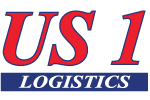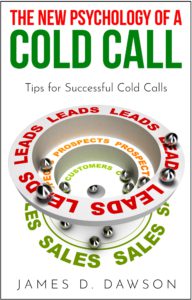Your next big shipper is one connection away—if you know how to reach them.
In the fast-moving world of freight, most brokerage agents are taught to pound the phones. Cold call after cold call, hoping to catch the right shipper at the right time. But today’s top agents are flipping the script—and logging into LinkedIn instead.
Why? Because modern shippers are doing their own research. They’re checking your online presence before they return your call. And if you’re not showing up as a credible, knowledgeable, and visible logistics pro, you might never make it onto their radar.
Let’s break down how to use LinkedIn not just as a resume—but as a business development engine that helps you build trust, spark conversations, and book more freight.
👤 1. Optimize Your Profile for Credibility
Hook: Your profile is your digital handshake—make it firm.
Your LinkedIn profile isn’t just a formality. It’s your brand. A clean headshot, a strong headline (“Freight Broker | Specializing in Food-Grade Reefer Lanes”) and a value-driven summary can set the tone.
Tip: Focus on what you solve, not just what you sell. Shippers care about outcomes—like on-time rates and flexible capacity—not job titles.
📊 Stat: Profiles with a professional photo and keyword-rich summary get 21x more views and 36x more messages, according to LinkedIn data.
🔍 2. Connect Strategically With Shippers and Carriers
Hook: LinkedIn isn’t a numbers game—it’s a relationships game.
Target logistics managers, warehouse supervisors, and supply chain coordinators—not just C-suite execs. Focus on your service region or freight niche.
Tip: Personalize your connection requests. Mention mutual industry interests or shared contacts to boost acceptance rates.
💬 3. Post Regularly—and Post Smart
Hook: People can’t trust you if they don’t see you.
Don’t just lurk—publish. Share market updates, freight tips, industry insights, or quick videos explaining common shipping mistakes and how to avoid them.
Tip: Use a content mix: 50% educational, 30% personal stories, 20% service highlights. And always include a clear call to action.
“I booked two repeat clients in one month from a single ‘cold chain tips’ post,” says brokerage agent Jasmine Torres.
📝 4. Use LinkedIn Messaging as a Warm Outreach Tool
Hook: Skip the cold call. Start a warm conversation.
In freight, first impressions matter—and nothing kills a deal faster than an aggressive, out-of-the-blue sales pitch. Instead of launching into a cold DM asking for freight opportunities, take a more thoughtful approach. LinkedIn isn’t just a contact list—it’s a conversation platform. Use it to build rapport before making your ask.
Start by engaging with your prospect’s content. Like their post, drop a thoughtful comment, or share it with your own audience and tag them. This puts your name in their notifications without the pressure of a sales pitch.
Then—and only then—send a personalized message. Keep it short, specific, and focused on value, not volume.
Example Message Template:
“Hi [Name], I really appreciated your post on optimizing warehouse scheduling—super relevant as we just helped a Midwest distributor reduce dwell time by 35%. I’d love to connect and see if there’s room to support any of your lanes this quarter.”
This approach is non-threatening, professional, and grounded in results. It shows you’ve done your homework and understand their challenges. That’s how you turn an ignored cold pitch into a welcome conversation.
Tip: Avoid sending links or attachments in the first message—they can trigger spam filters or turn a warm lead cold. Build trust first. Offer insight second.
📊 Stat: LinkedIn messages that reference shared interests or recent posts get 62% higher response rates than generic outreach.
Remember, every message is a chance to position yourself as a problem-solver—not just another broker in their inbox. Be authentic, be relevant, and always lead with value.
📈 5. Track and Engage Your Prospects Consistently
Hook: It takes 7–12 touches to convert a lead—LinkedIn makes those touches easy.
Comment on posts, like updates, share relevant articles. These micro-engagements keep you top-of-mind and signal credibility without being salesy.
Tip: Create a “Shipper Watchlist” in a CRM or spreadsheet and set reminders to interact weekly.
🤝 6. Showcase Your Wins Without Bragging
Hook: Case studies > cold pitches.
Post quick success stories about loads moved, issues solved, or lanes secured. Keep it results-driven and relatable.
Example:
“Last week we helped a retail shipper in Texas clear 30 loads stuck in Q4 backlog—without blowing their budget. Always a win when logistics and finance can high-five.”
📊 Stat: Posts with storytelling formats get 2.5x more engagement than generic promotional content.
Conclusion: Turn Your LinkedIn Into a Freight Magnet
As a brokerage agent, your success doesn’t just come from the number of calls you make—it comes from the strength of the relationships you build. And in today’s logistics world, where decision-makers are increasingly digital-first, your online presence is as important as your on-time rate.
Cold calling will always have its place—but it’s no longer the only play. The modern brokerage agent is smarter. They’re turning cold leads warm before the first call ever happens. How? By consistently showing up on LinkedIn with relevant insights, real results, and relatable stories that shippers can trust.
When your profile tells a story, when your posts solve problems, and when your messages feel like conversations—not sales pitches—you begin to stand out. You’re not just another name on a load board—you’re the agent who knows their stuff and shows up when it counts.
“Visibility builds credibility,” says logistics branding expert Carla Jensen. “When brokers become educators, connectors, and problem-solvers online, they don’t chase shippers—shippers find them.”
So stop shouting into the phone hoping to be heard. Instead, start building a digital presence that speaks volumes, even when you’re not actively selling. The more consistent, strategic, and human you are on LinkedIn, the more your network will work for you—bringing the kind of freight opportunities that cold calls just can’t match.
Not sure where to begin? Update your headline, post something helpful this week, and connect with five industry contacts. It’s the first mile of your LinkedIn freight journey.


Recent Comments